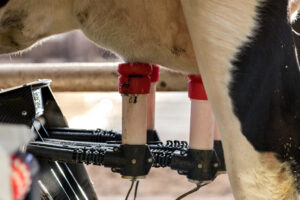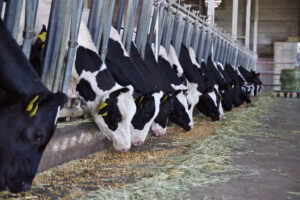In the common vocabulary, the microbiota is assimilated to the intestinal microbiota, certainly because it is more studied and known than its cousins skin or lungs… But also because it is involved in more health problems, digestive or behavioural, than the others.

The intestinal microbiota: a subject of discussion for all species!
Known for more than a century, it has only really been studied since the 1970s and the number of publications on the subject is increasing every year. The human species is the best known and among the animal species, the mouse and the pig have been the most studied. Chicken, however, are not being left out. It has its own specificities and pathologies. New techniques based on genetics give a new look and a more refined analysis of the complexity of this environment.
The case of chicken
The metagenome (set of genomes of the microorganisms making up the microbiota) of the chicken is currently being constructed by INRA-ITAVI, under the name of the Metachick project. In chicken, the most studied microbiotas are those of the caeca, the crop and the small intestine, but it is at the caeca level that the latter is present in greater quantities. It represents 1012 bacteria/g of caeca content and a great diversity (750 different species defined by their 16S DNA similarity rate).
What factors have an impact on microbiota?
Many factors can influence its composition:
– The characteristics of the host: age, strain, sex, maternal factors
– The environment: food, hygiene, temperature, type of bedding, location, medical treatment, breeding method.
What are its functions?
The intestinal microbiota interacts with the host and has several functions:
- The exchange of nutrients: the bacteria of the intestinal flora are capable of hydrolysing polysaccharides into primary sugars. These sugars are fermented to produce short-chain fatty acids such as propionate, butyrate or acetate. These fatty acids are used by chicken as a source of carbon and energy. Conversely, the intestinal cells are an important source of nitrogen and energy for the bacteria in the flora.
- A barrier function against pathogens: it is set up in the form of competitive exclusion where two bacterial species are interested in the same ecological niche. The intestinal flora competes with the pathogenic bacteria and reduces their adhesion and intestinal colonisation.
- Modulation of the immune system: it has the capacity to stimulate the development of the immune system including the mucus layer, the epithelial layer or the intestinal immune cells (T-helper cells, immunoglobulin producing cells, phagocytic cells).
- An effect on the host’s digestive function: via the production of short-chain fatty acids, it increases the proliferation and growth of the host’s enterocytes.
Acting on the chicken microbiota: utopia or real usefulness?
Chicken does not have an ideal microbiota
There is no typical or “healthy” microbiota defined to date. A diagnosis based on a microbiota analysis remains out of reach today. Rather, it is considered to be a question of balance to be achieved. Proof of this is that by comparing the articles in the literature, different distributions of phyla, families and bacterial genera can be observed in “control” chickens. Some studies show, for example, that Proteobacteria are part of the majority phyla, while in others it is Bacteroidetes that are predominant. (Wei et al. -2013 vs Hankel et al. -2019).*
Dysbiosis
In medicine, when there is no longer a balance or when certain pathogenic bacteria become the majority, we speak of dysbiosis. In chicken, it is difficult to use this term since its normal composition is not known. On the other hand, it is known that certain pathogens can become the majority under certain conditions, such as Campylobacter jejuni and Campylobacter coli, Salmonella enterica, Escherichia coli or Clostridium perfringens.
Controlling pathogenic flora
In animal husbandry, several alternatives to antibiotics are used to control these intestinal pathogens: prebiotics, probiotics, organic acids, essential oils and plant extracts. Acting on the pathogenic flora with these tools will always have a limited scope. Dosages to reduce a flora are out of reach, and to imagine rebalancing a flora by adding 1 to 10 micro-organisms remains an illusion. On the other hand, this panoply of additives can be used either to help rebalance the flora or for prevention. And for modern livestock farms, prevention must remain the key word.





